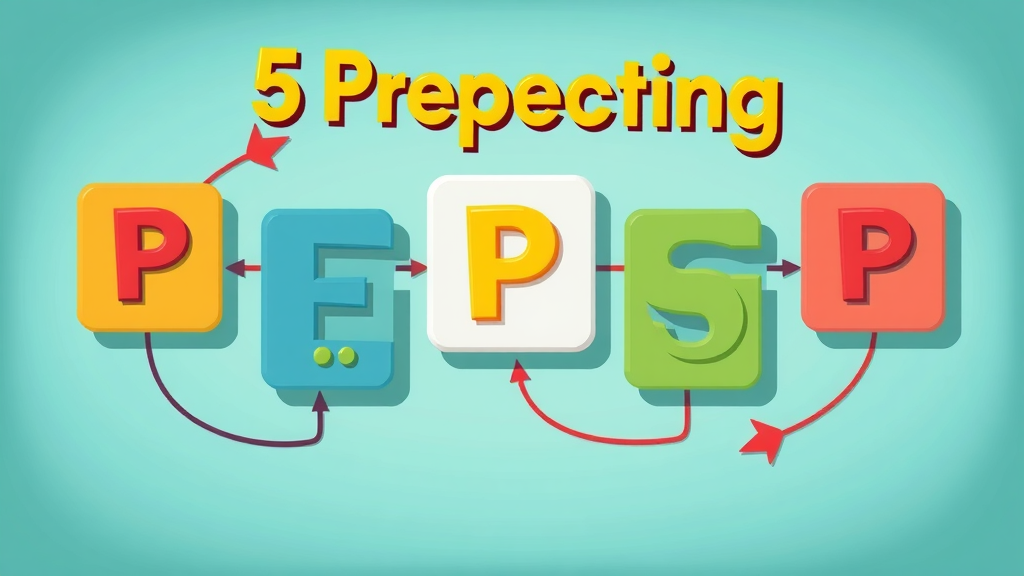Did you know that 79% of sales pros who excel at business prospecting consistently outperform their peers—often realizing exponential pipeline growth and higher closing rates? In today's highly competitive business landscape, business prospecting is no longer just a numbers game; it's the science of finding the right gold among cold leads and transforming them into high-value sales prospects. This guide reveals the proven methods, practical strategies, and essential tools that modern sales professionals use to master each step of the prospecting process and close more deals.
Business Prospecting Unveiled: The Art and Science of Identifying Sales Pros
- Discover why 79% of sales pros who excel at business prospecting outperform their peers. Master the keys to transforming cold leads into valuable sales prospects.

Business prospecting has evolved dramatically. Where once it was about cold calls and gut instinct, today's top sales pros harness data, technology, and psychology to identify and engage potential buyers who are a good fit for their solutions. These high-performing sales reps apply a strategic approach to segmenting, qualifying, and prioritizing leads, ensuring every prospecting effort is focused on maximum return. Whether you’re a sales rep starting your journey or a seasoned sales professional looking to sharpen your competitive edge, understanding modern business prospecting provides a tangible advantage. Real-world examples abound: From software firms using social media intelligence for lead generation to manufacturing companies leveraging CRM data for personalized outreach, the common thread is a relentless dedication to qualifying potential customers and tailoring strategies to their unique pain points.
Unlocking the Value of Business Prospecting in the Modern Sales Process
- Practical examples of high-yield business prospecting. How sales reps use targeted prospecting techniques to maximize lead generation efforts and accelerate pipeline growth.
In the modern sales process, business prospecting is an ongoing initiative that directly determines the quality of your sales funnel and, ultimately, the revenue growth of your business. Sales reps who consistently apply targeted prospecting techniques—such as multi-channel outreach, social selling, and data-driven cold calling—see measurable improvements in their lead gen efforts and a boost in qualified sales prospects entering the pipeline. High-yield prospecting is characterized by using research, automation, and personalization to engage potential customers with hyper-relevant messaging. For instance, a sales team might employ advanced analytics to spot warm prospects from cold leads, or use social media platforms to initiate meaningful conversations that uncover unspoken pain points and real business opportunities. By embedding prospecting within every stage of the sales process, top-performing organizations not only accelerate their sales cycles but also foster trust with potential buyers—turning cold leads into loyal clients.
What You'll Gain from Mastering Business Prospecting
- Gain actionable business prospecting techniques. Streamline your sales process for qualified sales prospects. Leverage data-driven strategies used by top sales teams.

| Method | Conversion Rate | Common Usage | Ideal for Sales Professionals |
|---|---|---|---|
| Cold Calling | 1-3% | Direct phone outreach to cold leads | Outbound focused sales pros |
| Email Campaigns | 3-5% | Personalized emails to curated lists | Sales reps optimizing follow-up |
| Social Selling | 5-10% | Engaging prospects on social media platforms | Sales professionals building relationships |
| Referral Prospecting | 15-20% | Leveraging existing network for introductions | Sales reps with established clients |
| AI-Driven Targeting | 10-18% | Automated lead qualification and scoring | Data-driven sales teams |
The Fundamentals: Sales Prospecting and Identifying High-Value Sales Prospects
- Defining business prospecting and its critical role in the sales process; Steps for segmenting sales prospects; The importance of synchronizing sales representatives and sales teams for effective prospecting.
At its core, business prospecting is the systematic process of identifying, engaging, and nurturing individuals or organizations that have the potential to become loyal customers. This critical step serves as the backbone of an effective sales process —without qualified sales prospects , even the best product or service will struggle in the market. Effective prospecting begins by segmenting your target audience. Sales teams must analyze demographic, behavioral, and firmographic data to categorize prospects by readiness, interest level, and their position in the buyer journey. This segmentation enables targeted communications that address specific pain points and deliver superior value. What truly sets top-performing teams apart is a unified approach: Sales reps and leadership synchronize efforts, share prospecting insights in real time, and establish best practices for qualifying leads.
Understanding Your Ideal Sales Prospect
- Unpacking the profile of a high-value sales prospect; The role of pain points analysis in business prospecting; Why identifying accurate pain points boosts prospecting strategy effectiveness.

Identifying your ideal sales prospect is essential for streamlining prospecting efforts. A high-value prospect is someone whose challenges and needs align closely with your product or service, and who demonstrates a genuine interest in finding a solution. Conducting a thorough analysis of a prospect’s pain points allows sales professionals to design meaningful conversations that go beyond surface-level selling, digging deep into the core issues a potential buyer faces. Leveraging surveys, customer interviews, and analytics can reveal patterns in pain points across your target market. Understanding whether a business is struggling with efficiency, cost reduction, or workflow optimization helps you present your solution as the best fit. By mapping these pain points to specific features or outcomes your offering delivers, you enhance the effectiveness of your prospecting strategy and dramatically boost the chances of converting cold leads into long-term customers.
Advanced Prospecting Strategies: Transforming Quality Sales Prospects into Opportunities
- How strategic prospecting techniques can uncover cold leads with high conversion potential; Integrating sales prospecting into your broader sales process; Practical prospecting strategy examples for sales professionals.
Advanced prospecting strategies empower sales professionals to spot gold in what most consider unworkable cold leads. Strategic prospecting technique examples include combining personalized outreach with AI-driven lead scoring and employing multi-channel communication to engage prospects wherever they are most responsive. Integration with your overall sales process is paramount. By embedding prospecting as an ongoing initiative—rather than a one-time activity—sales reps keep their funnel fresh with high-value opportunities. Leading organizations regularly run targeted campaigns, segment their outreach, and automate repetitive tasks to ensure their sales team focuses on the most promising prospects. The result is a dynamic approach where no quality lead slips through the cracks, and every prospecting effort is aligned with business objectives.
Prospecting Techniques for Sales Teams That Drive Results
- Tactics for multi-channel outreach, including cold calling, cold emails, and social selling; How sales reps can personalize messaging at scale; Overcoming common objections and addressing sales prospect pain points.

Winning sales teams master an arsenal of prospecting techniques to identify and nurture sales prospects. Multi-channel outreach, for example, ensures potential buyers are reached on their preferred platform—be it a phone call, a cold email, or a direct message via social media. Personalization is key: Using CRM data and behavioral insights, sales reps can tailor each message to the recipient, referencing specific industry trends or business challenges that resonate with the prospect’s needs. Overcoming objections is part science, part art. Anticipate pain points and show your expertise by offering case studies, testimonials, or relevant statistics. Address concerns directly and emphasize how your solution provides a true ROI. Training your reps to probe for underlying needs, listen attentively, and respond with empathy can make all the difference in transforming a skeptical lead into an eager buyer.
The Prospecting Process: Step-by-Step Approach for Sales Prospecting Success
- A framework to streamline your prospecting process; Key metrics to track at each stage of business prospecting; Aligning your sales team for continuous improvement.
A systematic prospecting process ensures consistency and maximizes your chances of moving leads through the sales funnel efficiently. The best frameworks start with targeted research, use segmentation to prioritize leads, initiate personalized engagement, and deploy thoughtful follow-up to maintain momentum. At each stage, tracking key metrics such as engagement rates, response times, and conversion ratios allows teams to continually refine their approach and improve outcomes. Alignment across the entire sales team is crucial; regular performance reviews, data sharing, and process documentation instill a culture of ongoing improvement. Encourage a feedback loop where lessons learned from successful prospecting efforts are shared, and missed opportunities are openly discussed. This not only helps new sales reps ramp up more quickly but also empowers seasoned staff to adapt to changing market dynamics.
Lead Generation Essentials for Sales Representatives
- Integrating lead gen and lead generation platforms with your business prospecting workflow; Methods to qualify cold leads quickly; Using automation for follow-up at scale.

Successful lead generation is fueled by the seamless integration of tech platforms designed for prospecting workflows. Modern CRMs and lead gen tools empower sales reps to aggregate disparate data, run automated list-building campaigns, and trigger follow-ups with precision timing. Qualifying cold leads can be automated using lead scoring models, which assign values to prospects based on interaction history, demographic fit, and digital engagement patterns. Automation doesn’t mean forfeiting personalization. By blending automated outreach with personalized variables—such as referencing a company’s recent achievements or industry news—sales reps can create warmth and relevance at scale. Consistent, timely follow-up is vital: Studies show that the majority of sales happen after five or more touches, emphasizing the need for persistent, value-driven engagement.
Outbound Prospecting vs. Inbound: What Every Sales Professional Should Know
- Definitions and distinctions between outbound prospecting and inbound sales prospecting; Advantages and best practices for each; Choosing the best prospecting strategy for your sales team.

Outbound prospecting involves direct outreach by sales reps—such as cold calling, emailing, or connecting over social media—to initiate conversations with new leads. This proactive approach gives sales pros greater control over their pipeline, allowing them to target accounts that closely match their ideal client profile. Outbound is especially effective for niche industries or high-ticket sales, where the pool of potential buyers is small but valuable. Conversely, inbound prospecting focuses on attracting potential customers who express interest of their own accord—responding to content marketing campaigns, signing up for webinars, or downloading lead magnets, for example. The greatest advantage of inbound prospecting is that leads are already somewhat qualified and actively seeking solutions. Modern sales teams often use a blend of both strategies, analyzing their market and product to determine where outbound vs. inbound prospecting delivers the best ROI.
| Metric | Description | Why It’s Important | Impact on Business Prospecting |
|---|---|---|---|
| Response Rate | The percentage of outreach attempts that receive a reply. | Indicates message resonance and initial interest. | Higher rates signify effective messaging and targeting. |
| Conversion Rate | The percentage of leads progressing to the next sales stage. | Measures the quality of lead gen and qualification process. | Directly tied to pipeline and revenue growth. |
| Touchpoints per Closed Deal | Average number of contacts made to close a sale. | Helps optimize follow-up cadence, avoid lost leads. | Improved cadence increases overall sales efficiency. |
| Time to First Contact | Speed of responding to a new lead or inquiry. | Affects likelihood of prospect engagement. | Faster follow-up increases win rate. |
| Qualified Lead Percentage | Ratio of leads meeting ideal prospect criteria. | Reflects targeting process and early qualification steps. | Ensures that sales effort is spent on good fit opportunities. |
Empowering Sales Teams: Skilling Up for Prospecting Success
- Training modules and ongoing development for sales reps; Examples of role-based prospecting techniques for sales professionals.

Investing in sales rep training is key to prospecting success. Leading organizations use structured onboarding and ongoing development programs to ensure every sales professional is equipped with the latest prospecting techniques—ranging from advanced cold calling scripts to social selling best practices. Role-based training empowers sales pros to leverage their strengths: For example, junior sales reps might focus on lead research and list building, while experienced staff specialize in consultative discovery calls or high-level negotiations. Gamifying the learning process and celebrating prospecting milestones builds morale and fosters a competitive, supportive culture. Continuous education and hands-on coaching mean your team stays agile, resilient, and ready to tackle any market shift.
Top 10 Business Prospecting Techniques Used by Leading Sales Pros
- Researching and qualifying sales prospects
- Personalized outreach and messaging
- Leveraging CRM tools for sales process optimization
- Segmenting cold leads for targeted campaigns
- Utilizing multi-channel prospecting techniques
- Implementing referral-based prospecting strategy
- Addressing pain points with value-driven solutions
- Leveraging social selling tactics
- Integrating lead generation automation
- Continuous prospecting process improvement

"80% of buyers say they prefer to work with sales professionals who demonstrate a clear understanding of their business objectives during the prospecting process." – Industry Report 2023
Maximizing Sales Process Efficiency with Modern Prospecting Tools
- Recommended CRM software for business prospecting; Automation platforms for lead generation and follow-up; Analytics tools that deliver real-time prospecting insights.

The right toolkit will transform your business prospecting from guesswork into a data-driven engine of sales success. Industry-standard CRM platforms—such as Salesforce, HubSpot, and Zoho CRM—offer robust pipelines, real-time reporting, and easy automation for follow-up tasks. For advanced lead generation and outreach, solutions like Outreach.io, LinkedIn Sales Navigator, and Apollo.io give sales pros granular targeting and multi-channel execution at scale. Analytics platforms with AI-driven insights reveal which prospecting techniques yield the best returns and help you pivot rapidly to changing market demands. By centralizing your prospecting data and automating routine touchpoints, sales reps can devote more time to meaningful, consultative interactions that turn qualified leads into satisfied customers.
People Also Ask: What is prospecting in business?
- Business prospecting is the systematic process sales professionals use to identify, qualify, and engage potential sales prospects for new business opportunities.
In simple terms, business prospecting is all about finding and contacting individuals or companies who are most likely to benefit from what you offer. The process involves using a variety of prospecting techniques—like market research, cold calls, and personalized outreach—to determine which potential customers are a good fit and ready to move forward in your sales process. Effective prospecting helps sales reps and sales pros fill their pipeline with qualified opportunities, ensuring sustained business growth.
People Also Ask: What are the 5 P's of prospecting?
- The 5 P's of prospecting are: Prepare, Probe, Personalize, Present, and Persist. Each element is essential for a successful prospecting strategy and optimizing the prospecting process.

- Prepare : Research your target market and sales prospects thoroughly to ensure a focused approach.
- Probe : Ask insightful questions to uncover pain points and business objectives during your initial conversations.
- Personalize : Tailor your messaging and engagement to each sales prospect for maximum resonance and trust.
- Present : Clearly articulate the value and benefits of your product or service, directly addressing the prospect’s needs.
- Persist : Follow up consistently; most successful prospecting outcomes result from multiple contacts and ongoing engagement.
People Also Ask: What is an example of a business prospect?
- A business prospect is any individual or company who fits the ideal customer profile for your products or services, showing potential to become a paying client after going through the sales process.
For example, if your company sells HR management software, an ideal business prospect could be a Human Resources Director at a mid-sized company that recently posted job openings and is expanding rapidly. The prospect has budget authority, faces pain points related to workforce management, and is actively seeking new solutions—making them a good fit for your offering. By targeting such qualified sales prospects, your sales team maximizes closure rates and minimizes wasted effort on cold leads who aren’t likely to convert.
People Also Ask: What is business to business prospecting?
- Business to business (B2B) prospecting is the process of identifying and engaging companies, rather than individuals, as sales prospects through targeted outreach and relationship-building strategies.
In B2B prospecting, sales professionals focus on companies that match their target customer profile. The process emphasizes building relationships with key stakeholders, understanding organizational pain points, and customizing the prospecting strategy to meet the unique dynamics of business buying decisions. Techniques include personalized email outreach, networking at industry events, social selling on platforms like LinkedIn, and collaborating with marketing to deliver tailored content that addresses the specific needs of each business prospect.
Answers to Frequently Asked Questions on Business Prospecting
- How often should sales reps prospect? Sales reps should schedule prospecting daily or multiple times weekly to keep their sales funnel full and maintain a healthy pipeline. Consistency is critical for long-term success.
- What are the top mistakes in business prospecting? Common mistakes include failing to research leads, sending generic messages, neglecting follow-up, and giving up after initial rejection. Tailoring your approach and tracking metrics prevents these errors.
- Which tools can increase prospecting efficiency? CRMs (like Salesforce), automation platforms (like Outreach.io), and analytics tools that provide real-time engagement data are highly effective for increasing prospecting efficiency and effectiveness.
- How do you develop a prospecting strategy? Assess your target market, segment leads, craft personalized outreach, schedule regular activity, track key metrics, and continually refine your approach based on data-driven insights. Learning from top sales pros and adapting to changing buyer behavior is key.
Key Takeaways for Business Prospecting Mastery
- Business prospecting is foundational for effective sales growth.
- An optimized sales process and tailored prospecting techniques deliver measurable results.
- Successful sales reps consistently analyze and adapt their prospecting strategy.
Elevate Your Sales Team: Start Your Business Prospecting Transformation Today
- Leverage proven business prospecting techniques and strategies. Empower your sales reps and sales team to surpass revenue goals. Accelerate growth by mastering the art and science of sales prospecting.
Ready to elevate your sales performance? Adopt these business prospecting strategies, empower your sales reps, and start converting cold leads into revenue-generating relationships today!
 Add Row
Add Row  Add
Add 




Write A Comment